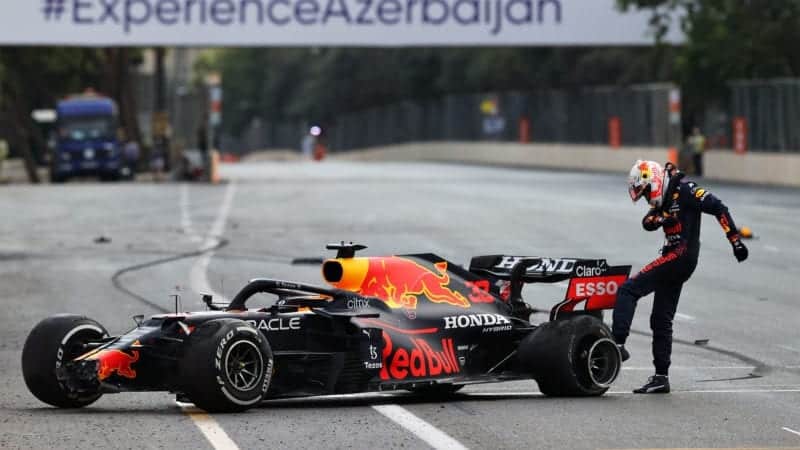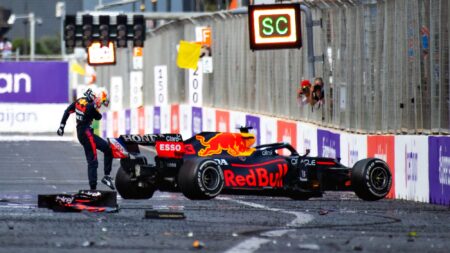“We adhered to Pirelli’s tyre parameters at all times and will continue to follow their guidance. We are grateful that following the weekend’s high speed impacts no drivers were injured.”
Pirelli said that it had examined the tyres used by Verstappen and Stroll as well as others in the race, some which were run for longer than those that failed.
“The process established that there was no production or quality defect on any of the tyres; nor was there any sign of fatigue or delamination,” said Pirelli.
“The causes of the two left-rear tyre failures on the Aston Martin and Red Bull cars have been clearly identified. In each case, this was down to a circumferential break on the inner sidewall, which can be related to the running conditions of the tyre, in spite of the prescribed starting parameters (minimum pressure and maximum blanket temperature) having been followed.
“As a result of this analysis, Pirelli have submitted their report to the FIA and the Teams. The FIA and Pirelli have agreed a new set of the protocols, including an upgraded technical directive already distributed, for monitoring operating conditions during a race weekend and they will consider any other appropriate actions.”


